Equestrian women: Jumping against time
horse riding | Nov 2022
Equestrianism is the only Olympic sport in which women and men compete on equal terms. Nevertheless, we cannot say that women and men approach in the same way their sport careers. Age, family and geographical situation, social and cultural environment have a direct impact on women's participation and success in the equestrian world. In this article, we try to get close to the role of women in show jumping competitions, their prominence, their relationship with the horse and the difficulties they have to deal with to achieve their goals and overcome challenges.
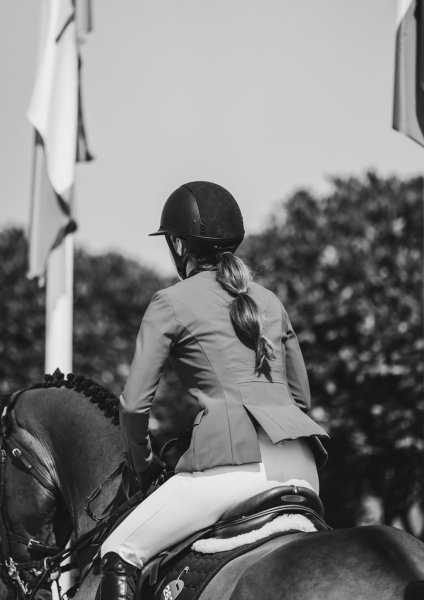
WHEN WOMEN REACH AN AGE , THEY PAY MORE ATTENTION TO STARTING A FAMILY
68 of the 99 participants in the last FEI European Jumping Championships for Juniors were women. In a smaller percentage (49 out of 86), there was also a majority of female riders in the Young Riders' category. However, in this year's FEI World Championships for adults, held in Herning (Denmark), the figures took a radical turn, as 82 of the 103 competitors were men. The figures confirm a reality that can be sensed on a daily basis and show the unquestionable feminine prominence in the younger categories and its progressive decrease as age increases. According to Laura Kraut, Olympic and World Champion with her national team,
Malin Baryard-Johnson has 7 team medals (2 gold) in the Olympic Games and World and European Championships, to which we should add another 3 in junior categories:
The equestrian world has many peculiarities; amongst them, women and men compete on equal terms and the competitive age of riders is much longer than in the vast majority of sports. Many sportswomen become mothers once they finish their careers, but this does not happen in the equestrian sport. The consequence is that many female riders disappear from the competition arenas or take a back seat when they reach the age where they usually achieve their best riding performance. Malin Baryard is mother of two children, but this fact has not prevented her from maintaining a successful sporting career. Laura Kraut also gave up on the competition to prioritize motherhood for a while. According to the American rider,
Malin Baryard has also managed to stay in the elite although she admits that her second motherhood made her change:
The Spanish rider Pilar Cordón, who has represented her country in the Olympic Games and in three World and European Championships, has no children and admires what her colleagues that are mothers do: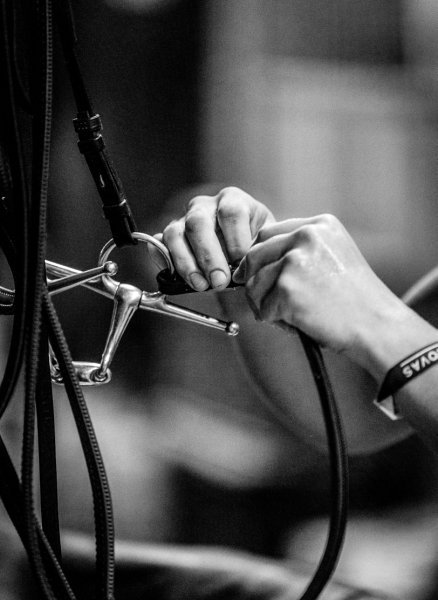
During the last Longines FEI Jumping Nations Cup Final in Barcelona, Norway and Sweden went with all-female quartets, something that is also common in the USA team. Henrik Ankarcrona, head of the Swedish World and Olympic champion team, believes that "it was a coincidence, the important thing is to create solid teams. What is clear is that in my country it is a tradition for girls to start riding very early. There are many riding schools in big cities and little towns, and it is a very popular sport amongst girls. That's why there are so many women competing." According to Malin Baryard, "in Sweden, at a very young age, 99% of girls ride. It's like a girl's sport, the boys play soccer and the girls ride horses. It's common to see women competing in Nations Cups but then in the major championships everything changes and I've been the only woman on the team for the last ten years, so at the highest level in Sweden it's also male dominated". "It's not clear to me," says Laura Kraut, "which is the reason why there are so many women competing in the United States, but what is undeniable is that in Europe, with the exception of Sweden and Norway, it is a male- dominated sport. I think this is changing, now you see more women in the top competitions, for example in Germany or Great Britain. But there is still a long way to go".
The logical consequence of this disproportion in the top competitions is the dominance of men in the Longines FEI Rankings of showjumping. Only three female riders are currently in the top 50: Malin Baryard-Johnson (45th), Laura Kraut (48th) and Tiffany Foster (49th), but this does not mean that women do not get the medals or are absent from prize-giving ceremonies at major international competitions. Apart from those already mentioned in this report, athletes such as Bezzie Madden, Meredith Michaels, Simone Blum, Edwina Tops- Alexander, Jessica Kürten, Gail Greenough and many others have achieved titles and great successes. The difficulty lies in getting continuity over time. For Henrik Ankarcrona,
“When I became a mother in 1999,” says Laura Kraut, “the ranking was not important, but now it is important because it gives you access to many competitions. If there were more women running at a good level there would be more women in the top 50, that doesn’t happen now and it’s very frustrating. But for me having a child is much more important than your place in the ranking, it’s not so much time away from your professional life and you have to prioritize. If you want to have children you have to have them and if you are good enough and have determination it won’t affect you so much”. According to Pilar Cordón,
In a high-cost world like the equestrian one, it is essential to have the support of owners and sponsors. In order to get this, good results and a good position in the ranking are very important. This seems to put women at a disadvantage, but it is not always the case: "Most women compete less than men and we are not as high in the ranking" says Malin Baryard, "but because so few of us are in top competition, access to sponsors can make it a little easier for us”. Laura Kraut adds that "In the United States there are a lot of female riders and the treatment is quite similar. I've had great owners who weren't specifically looking for men or women, just someone who met their requirements. It's always complicated to get good owners, but I've been lucky and for me it hasn't been difficult". Pilar Cordón, a permanent figure on the Spanish team for many years but now far from the top of the rankings, has a different perspective:


It is clear that the conditioning factors are different for men and women, but once they go into the arena, they compete on equal terms, which makes equestrianism a different sport. "In other sports," says Malin Baryard, "women wouldn't stand a chance against men because of speed or strength. When you ride horses the important thing is to feel and to know the horse, the feeling you have with it, and that doesn't depend on whether you're a man or a woman. The physical part is not so important”. Laura Kraut stresses that "this is a sport in which the real athletes are the horses and the stallions, the geldings and the mares compete together without any problem. It is not exclusively a physical issue. The connection between rider and animal is essential". When it comes to weighing the strengths and weaknesses of female riders against male riders, Pilar Cordón believes that "strength plays in favor of men and that perhaps allows them to ride a wider range of horses. But sensitivity is essential in this sport and that plays in our favor, as well as intuition although there are also men who are very intuitive". Malin Baryard doesn't like generalizations:
Henrik Ancarkrona also emphasizes on the uniqueness of each rider regardless of gender: "I don't think there are specific horses for men or for women because each rider is different. In the end, the success depends on how each rider connects with the horse: there are men with a great ability to ride sensitive horses and there are women who get a great performance out of strong horses". Laura Kraut stresses that empathy and points out an important difference in the relationship with the animals:
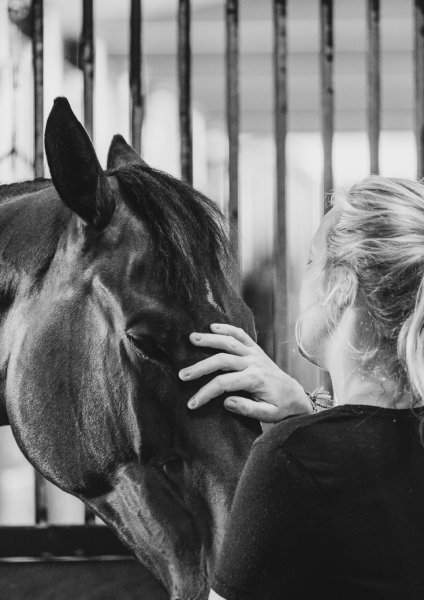

The difference in the relationship with the horse to which Laura Kraut alluded may be at the origin of the constant increase in the number of girls in international competition. According to Malin Baryard,
"I know a lot of girls who are passionate about horses," says Laura Kraut, "and when they grow up they start working in the stable alongside them because it's something they're passionate about”. That could be the case of Adeline Amary, Sergio Álvarez Moya's current groom after working 9 years with René López:
Despite the high physical demands, Adeline began then a professional adventure in which she is accompanied by many other women. According to Laura Kraut, "to be good and hold on you have to love what you do and the horses. It is a very complicated job that takes many hours and a very important physical wear and tear". But this physical wear and tear has not prevented the number of young women from growing steadily in recent years. According to Adeline, "working conditions have evolved a lot in recent years. Technology has helped in making everything easier, but it has also changed the mentality. Many international competitions have staff to help load and unload and make your job easier, the manufacturing of trucks and different materials has improved a lot, the tacks are lighter, there are mechanical systems to load and unload material from the trucks and driving and life in a truck is much easier. There are also stables with 2 competition grooms, which makes it easier to rest between competitions". The improvement of these conditions has allowed a greater female presence in the stables but, as in the competition arenas, this presence is considerably reduced over the years.
The Casas Novas facilities will host this winter for the 6th year the Longines FEI Jumping World Cup, a competition won two consecutive editions, 2017 and 2018, by a woman, Edwina Tops-Alexander, who returned to the arenas after her maternity. The competition's list of grand prix winners, in its summer and winter editions, has other illustrious female names such as Eugenie Angot, Laura Kraut, Lisa Nooren or Kacklyn Duff and, for sure, those of many others will be added very soon. Equestrianism is a feminine word in many languages and it may not be a coincidence. It is the name of a sport that puts everyone on the same level on the track but in which, for women, time is the main obstacle. An obstacle that many overcome year after year through effort, dedication and talent. With some knockdowns or refusals along the way, yes, but with many runs without fault.
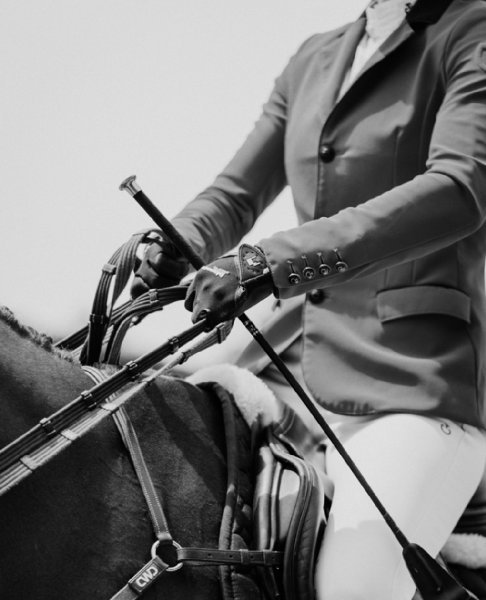


The age
WHEN WOMEN REACH AN AGE , THEY PAY MORE ATTENTION TO STARTING A FAMILY68 of the 99 participants in the last FEI European Jumping Championships for Juniors were women. In a smaller percentage (49 out of 86), there was also a majority of female riders in the Young Riders' category. However, in this year's FEI World Championships for adults, held in Herning (Denmark), the figures took a radical turn, as 82 of the 103 competitors were men. The figures confirm a reality that can be sensed on a daily basis and show the unquestionable feminine prominence in the younger categories and its progressive decrease as age increases. According to Laura Kraut, Olympic and World Champion with her national team,
"Especially in Europe, when women are in their twenties they get married, have children... and this is a very difficult sport but also a business. At that stage, for us, it's a little bit more complicated than for men to keep the level as an athlete and also take care of the business side, which is a male-dominated territory."
Malin Baryard-Johnson has 7 team medals (2 gold) in the Olympic Games and World and European Championships, to which we should add another 3 in junior categories:
"I've been in the sport since I was very young and I'm still here. Reaching the top level is very hard, it takes a lot of time and a lot of effort. Perhaps men have an advantage in finding horse owners or sponsors, but there are many factors
that have an influence and women also reach an age when they sometimes pay more attention in starting a family".
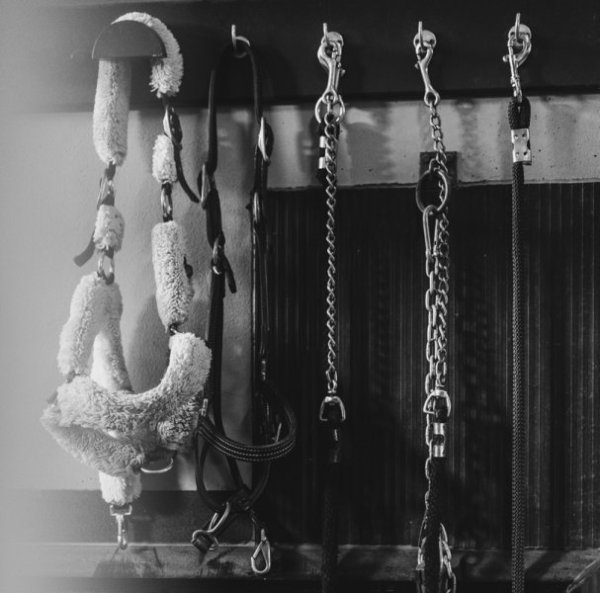
that have an influence and women also reach an age when they sometimes pay more attention in starting a family".

Motherhood
BEING A MOTHER HAS HELPED ME IMPROVE IN THE SPORT, TO PUT THINGS IN PERSPECTIVEThe equestrian world has many peculiarities; amongst them, women and men compete on equal terms and the competitive age of riders is much longer than in the vast majority of sports. Many sportswomen become mothers once they finish their careers, but this does not happen in the equestrian sport. The consequence is that many female riders disappear from the competition arenas or take a back seat when they reach the age where they usually achieve their best riding performance. Malin Baryard is mother of two children, but this fact has not prevented her from maintaining a successful sporting career. Laura Kraut also gave up on the competition to prioritize motherhood for a while. According to the American rider,
“Having a child has helped me improve in the sport and in the competition. It has allowed me to put things in perspective: instead of being super upset about scoring four points in the Grand Prix, you come home, you’re with your child and you say, ‘Well, it’s no big deal!’ I was lucky to have my mother who helped me a lot so I could go away from home to compete knowing that he was in good hands. It’s not easy, having children involves a lot of planning, but it’s worth all the effort you have to do to make it work.”
Malin Baryard has also managed to stay in the elite although she admits that her second motherhood made her change:
“I have managed to combine both lives but when I had my second child everything changed. I used to compete every weekend and now I do it maximum twice a month. I have a job and I have to fulfill it, but I am also a mother. I am very happy to be able to stay in the top and be successful without competing every weekend. Now I enjoy the competitions and I also enjoy spending time with my children at home during the weekends.”
The Spanish rider Pilar Cordón, who has represented her country in the Olympic Games and in three World and European Championships, has no children and admires what her colleagues that are mothers do:
“There are many riders who continue to ride after having children, but everything becomes more complicated for them. Now it is no longer like before, when the woman worked at home and the man outside. It is becoming a little more equal, but it is still noticeable in sports. In the Nordic countries and the USA, on the other hand, it is very common to see a majority of women. It may be a cultural issue.”

The country
IN SWEDEN, BOYS PLAY SOCCER AND GIRLS RIDE HORSESDuring the last Longines FEI Jumping Nations Cup Final in Barcelona, Norway and Sweden went with all-female quartets, something that is also common in the USA team. Henrik Ankarcrona, head of the Swedish World and Olympic champion team, believes that "it was a coincidence, the important thing is to create solid teams. What is clear is that in my country it is a tradition for girls to start riding very early. There are many riding schools in big cities and little towns, and it is a very popular sport amongst girls. That's why there are so many women competing." According to Malin Baryard, "in Sweden, at a very young age, 99% of girls ride. It's like a girl's sport, the boys play soccer and the girls ride horses. It's common to see women competing in Nations Cups but then in the major championships everything changes and I've been the only woman on the team for the last ten years, so at the highest level in Sweden it's also male dominated". "It's not clear to me," says Laura Kraut, "which is the reason why there are so many women competing in the United States, but what is undeniable is that in Europe, with the exception of Sweden and Norway, it is a male- dominated sport. I think this is changing, now you see more women in the top competitions, for example in Germany or Great Britain. But there is still a long way to go".
The ranking
GETTING BACK TO THE TOP OF THE RANKING AFTER BECOMING A MOTHER IS VERY COMPLICATEDThe logical consequence of this disproportion in the top competitions is the dominance of men in the Longines FEI Rankings of showjumping. Only three female riders are currently in the top 50: Malin Baryard-Johnson (45th), Laura Kraut (48th) and Tiffany Foster (49th), but this does not mean that women do not get the medals or are absent from prize-giving ceremonies at major international competitions. Apart from those already mentioned in this report, athletes such as Bezzie Madden, Meredith Michaels, Simone Blum, Edwina Tops- Alexander, Jessica Kürten, Gail Greenough and many others have achieved titles and great successes. The difficulty lies in getting continuity over time. For Henrik Ankarcrona,
“There are many reasons, but one of the main difficulties is coming back after motherhood. Many do it but getting back to the top of the ranking after leaving is very complicated”.
“When I became a mother in 1999,” says Laura Kraut, “the ranking was not important, but now it is important because it gives you access to many competitions. If there were more women running at a good level there would be more women in the top 50, that doesn’t happen now and it’s very frustrating. But for me having a child is much more important than your place in the ranking, it’s not so much time away from your professional life and you have to prioritize. If you want to have children you have to have them and if you are good enough and have determination it won’t affect you so much”. According to Pilar Cordón,
“this sport demands a daily work that you can afford when you are young but as you get older you take on other responsibilities that consume a lot of your time and force you to leave the sport in the background. Under these conditions, it is very difficult to stay at the top”.

Sponsors
GETTING SPONSORS IS DIFFICULT BUT IF YOU GO INTO THE ARENA AND WIN, EVERYTHING IS EASIERIn a high-cost world like the equestrian one, it is essential to have the support of owners and sponsors. In order to get this, good results and a good position in the ranking are very important. This seems to put women at a disadvantage, but it is not always the case: "Most women compete less than men and we are not as high in the ranking" says Malin Baryard, "but because so few of us are in top competition, access to sponsors can make it a little easier for us”. Laura Kraut adds that "In the United States there are a lot of female riders and the treatment is quite similar. I've had great owners who weren't specifically looking for men or women, just someone who met their requirements. It's always complicated to get good owners, but I've been lucky and for me it hasn't been difficult". Pilar Cordón, a permanent figure on the Spanish team for many years but now far from the top of the rankings, has a different perspective:
"For women it is more difficult to get sponsors, we are still considered the "weaker sex", we compete on equal terms but there is no real equality. However, if you get into the arena and win, everything is easier".


A unique sport
THE ATHLETE IS THE HORSE . THE MOST IMPORTANT THING IS THE CONNECTION BETWEEN THE RIDER AND THE ANIMAL AND NOT THE STRENGTHIt is clear that the conditioning factors are different for men and women, but once they go into the arena, they compete on equal terms, which makes equestrianism a different sport. "In other sports," says Malin Baryard, "women wouldn't stand a chance against men because of speed or strength. When you ride horses the important thing is to feel and to know the horse, the feeling you have with it, and that doesn't depend on whether you're a man or a woman. The physical part is not so important”. Laura Kraut stresses that "this is a sport in which the real athletes are the horses and the stallions, the geldings and the mares compete together without any problem. It is not exclusively a physical issue. The connection between rider and animal is essential". When it comes to weighing the strengths and weaknesses of female riders against male riders, Pilar Cordón believes that "strength plays in favor of men and that perhaps allows them to ride a wider range of horses. But sensitivity is essential in this sport and that plays in our favor, as well as intuition although there are also men who are very intuitive". Malin Baryard doesn't like generalizations:
"Every rider is unique. In the end, all riders know that the more you know your horses and the more time you spend with them off the track the better the relationship and therefore the performance is"
Henrik Ancarkrona also emphasizes on the uniqueness of each rider regardless of gender: "I don't think there are specific horses for men or for women because each rider is different. In the end, the success depends on how each rider connects with the horse: there are men with a great ability to ride sensitive horses and there are women who get a great performance out of strong horses". Laura Kraut stresses that empathy and points out an important difference in the relationship with the animals:
"Girls love their ponies when they are little, we stayed a long time after riding, we played with them, pampered them, brushed them..."


The grooms
THERE ARE MORE AND MORE GROOMS BECAUSE THE MENTALITY HAS CHANGED AND WORK CONDITIONS HAVE EVOLVEDThe difference in the relationship with the horse to which Laura Kraut alluded may be at the origin of the constant increase in the number of girls in international competition. According to Malin Baryard,
"there are so many women who love horses and being a groom allows you to spend a lot of time with them, work with them during competitions, take care of them. There are a lot of girls interested in this work because of that".
"I know a lot of girls who are passionate about horses," says Laura Kraut, "and when they grow up they start working in the stable alongside them because it's something they're passionate about”. That could be the case of Adeline Amary, Sergio Álvarez Moya's current groom after working 9 years with René López:
"I started riding late, when I was 18 years old. I realized soon that I kind of enjoyed more being with the horse, taking care of him, cleaning him, more than riding. I had studied communications and was in charge of a company's website, but when I saw an offer to work as a groom with young horses, I didn't think twice".
Despite the high physical demands, Adeline began then a professional adventure in which she is accompanied by many other women. According to Laura Kraut, "to be good and hold on you have to love what you do and the horses. It is a very complicated job that takes many hours and a very important physical wear and tear". But this physical wear and tear has not prevented the number of young women from growing steadily in recent years. According to Adeline, "working conditions have evolved a lot in recent years. Technology has helped in making everything easier, but it has also changed the mentality. Many international competitions have staff to help load and unload and make your job easier, the manufacturing of trucks and different materials has improved a lot, the tacks are lighter, there are mechanical systems to load and unload material from the trucks and driving and life in a truck is much easier. There are also stables with 2 competition grooms, which makes it easier to rest between competitions". The improvement of these conditions has allowed a greater female presence in the stables but, as in the competition arenas, this presence is considerably reduced over the years.
Breaking obstacles
Adeline came back to work after leaving it for a while. Laura Kraut, Malin Baryard-Johnson also did it and they have continued achieving successes and international victories. The US rider add two more team Olympic medals’ (gold and silver) and other two of the same metals in world championship, besides of large grand prix. The Swedish rider has just proclaimed world champion and team Olympic winner in the last two years, add 10 medals in big championships and has won grand prix in arenas like Geneve, Gothemburg, Rome or Saint Tropez among others. Their cases aren’t one-of-a-kind. Edwina Tops- Alexander has won after being a mother in A Coruña, Paris, Prague, Miami or Riyadh, and this year, for example, Janne-Friederike Meyer Zimmermann has reappeared winning Hagen and Munster’s Grand Prix and the Nation Cup in Sopot. These examples, and many more, prove that the competition doesn’t fool, and men and women are the same at the arena. “I’ve decided that I wanted to be there – Laura Kraut said – I enjoy competing at this level. In this sport is not easy stay up, but it’s harder arrive there, go up from the 250th position to the top 50 is very difficult. I did it and I try to be sure that I keep this level all the time that I could. That’s important to me”. Also, Malin Baryard is in the top 50, in fact, is the best rider of the ranking:“I have been very lucky with a family that supports me a lot, good sponsors and owners. Being successful in this sport has always been my dream and I’ve worked very hard to get it.”
The Casas Novas facilities will host this winter for the 6th year the Longines FEI Jumping World Cup, a competition won two consecutive editions, 2017 and 2018, by a woman, Edwina Tops-Alexander, who returned to the arenas after her maternity. The competition's list of grand prix winners, in its summer and winter editions, has other illustrious female names such as Eugenie Angot, Laura Kraut, Lisa Nooren or Kacklyn Duff and, for sure, those of many others will be added very soon. Equestrianism is a feminine word in many languages and it may not be a coincidence. It is the name of a sport that puts everyone on the same level on the track but in which, for women, time is the main obstacle. An obstacle that many overcome year after year through effort, dedication and talent. With some knockdowns or refusals along the way, yes, but with many runs without fault.

